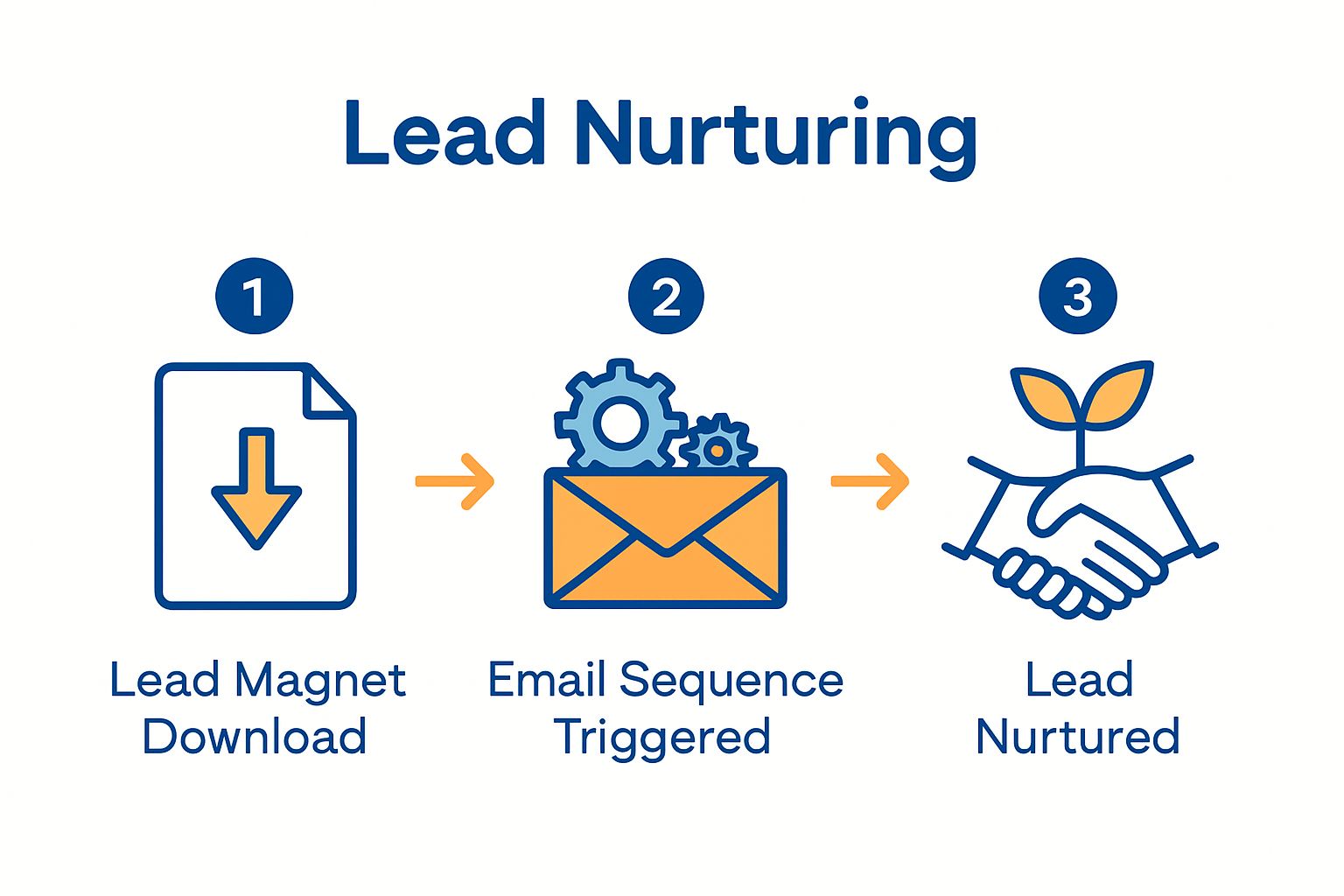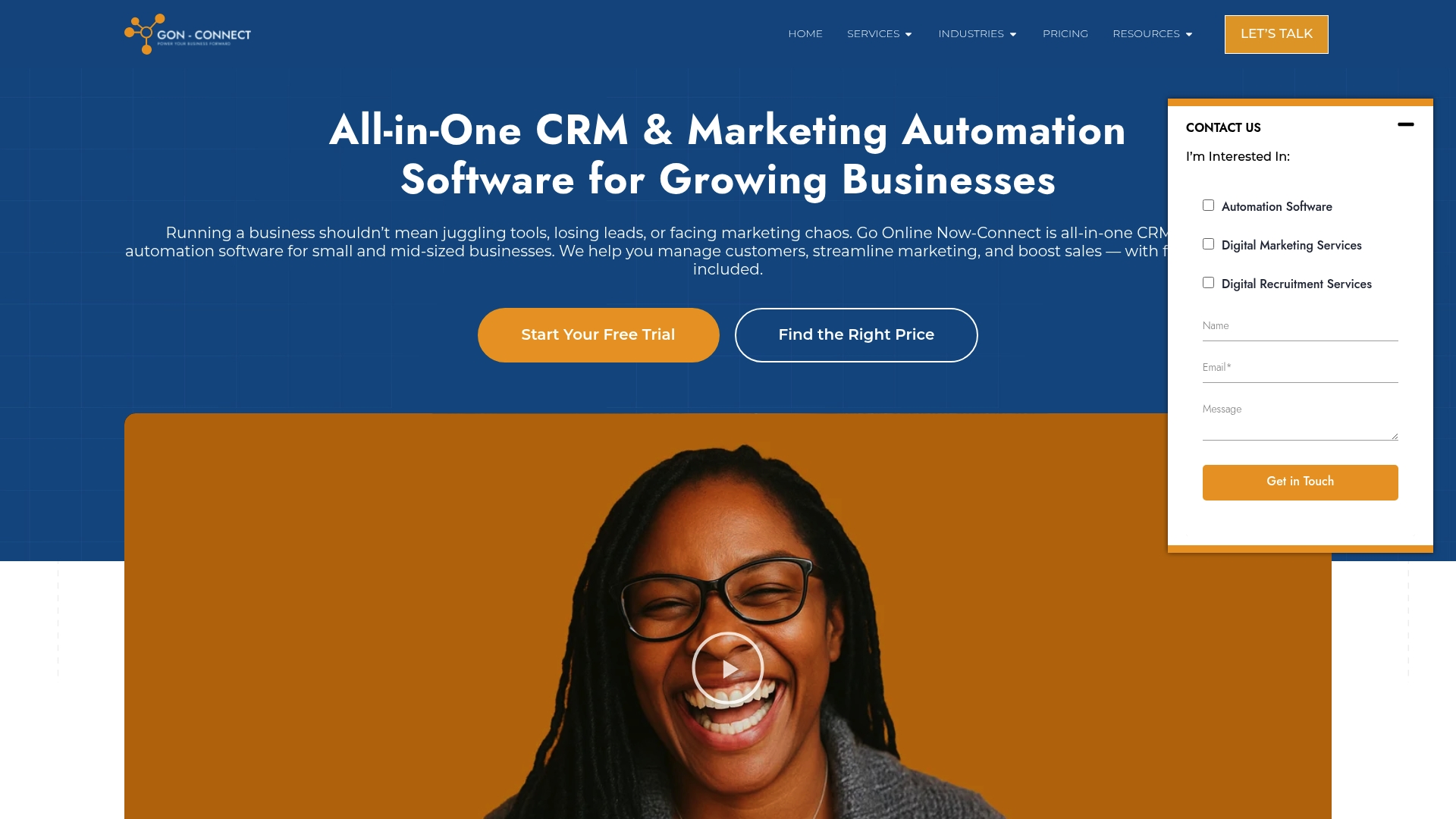Building a lead generation workflow can seem overwhelming, especially when there are so many tools and tactics promising quick results. Yet most businesses miss that defining your target audience is the single most influential step, shaping every result downstream. Surprisingly, spending more time on this foundation speeds up your entire process, letting every automation and lead magnet work smarter instead of harder.
Step 1: Define Your Target Audience
Defining your target audience is the foundational step in creating an effective lead generation workflow. This crucial initial phase determines how precisely you will attract and convert potential customers. Without a clear understanding of who you are targeting, your marketing efforts will be scattered and inefficient.
Start by developing comprehensive buyer personas that go beyond basic demographic information. These personas should capture the nuanced characteristics, pain points, motivations, and professional challenges of your ideal customers. Consider not just age and location, but deeper insights like career goals, daily workflow challenges, and specific problems your product or service can solve.
To craft these detailed personas, begin with existing customer data. Review your current client base and identify common patterns. Analyze interactions from your sales conversations, customer support records, and explore target market tactics to uncover meaningful insights. Look for recurring themes in customer inquiries, purchasing behaviors, and engagement levels.
Qualitative research methods are equally important. Conduct interviews with current customers, send targeted surveys, and engage in direct conversations to understand their deeper needs. Ask open ended questions about their professional challenges, decision making processes, and what solutions they currently use. These conversations will reveal rich context that quantitative data might miss.
Technology can significantly streamline this research process. Utilize customer relationship management (CRM) tools that offer detailed analytics and segmentation capabilities. These platforms can help you track customer interactions, preferences, and behavior patterns across multiple touchpoints. Pay special attention to data points that reveal not just who your customers are, but how they make purchasing decisions.
Remember that target audience definition is not a one time task but an ongoing process. Markets evolve, and so do customer needs. Schedule quarterly reviews of your buyer personas to ensure they remain accurate and relevant. By maintaining a dynamic, data driven approach to understanding your audience, you’ll create a lead generation workflow that consistently delivers high quality prospects.
The table below summarizes key verification criteria for each step in the lead generation workflow, helping you track your progress and ensure all critical elements are completed.
| Step | Key Verification Criteria |
|---|---|
| Define Target Audience | 3-5 documented buyer personas, primary challenges and motivations identified, |
| communication channels mapped, initial segmentation strategy outlined | |
| Select Lead Generation Tools | Comparison of 3+ platforms, features and integrations understood, |
| trial/demo completed, budget and cost-benefit analysis documented | |
| Create Engaging Lead Magnets | 2-3 lead magnets developed, professional design finished, |
| automated delivery system tested, initial performance metrics tracked | |
| Automate Outreach Process | Communication workflows for each persona documented, |
| multi-step email sequences tested, cross-channel automation verified, early metrics recorded | |
| Measure & Analyze Results | Dashboard established, key metrics analyzed, optimization opportunities identified, |
| initial improvements implemented |
Key verification for completing this step includes:
- A comprehensive document detailing 3 5 distinct buyer personas
- Clear understanding of each persona’s primary challenges and motivations
- Mapped out communication channels where these personas are most active
- Initial segmentation strategy for targeted messaging
Step 2: Select Lead Generation Tools
Selecting the right lead generation tools transforms your marketing strategy from a manual, time consuming process into a streamlined, efficient system. These tools are the technological backbone that will help you capture, track, and nurture potential customers with precision and minimal manual intervention.
Your tool selection should directly align with the buyer personas you developed in the previous step. Begin by evaluating platforms that offer comprehensive features tailored to your specific industry and target audience. Look for solutions that provide robust customer relationship management capabilities, allowing you to track interactions, segment leads, and personalize communication strategies.
Learn how to create sales funnels that integrate seamlessly with your chosen lead generation tools. Modern marketing platforms offer integrated systems that connect multiple touchpoints, from initial contact to final conversion. Prioritize tools that provide automation features like automated email sequences, lead scoring, and behavior tracking.
Consider a mix of tools that cover different aspects of lead generation. Your technology stack might include a primary CRM platform, email marketing software, social media management tools, and analytics platforms. The goal is to create an interconnected ecosystem that provides comprehensive insights into your lead generation workflow.
This table provides a quick comparison of common lead generation tool types mentioned in the article, along with their main features and intended purposes.
| Tool Type | Main Features | Purpose |
|---|---|---|
| CRM Platform | Lead tracking, analytics, segmentation, integrations | Centralize and manage all lead information |
| Email Marketing Software | Automated sequences, personalization, performance metrics | Nurture leads and maintain regular communication |
| Social Media Management | Scheduled posts, engagement tracking, analytics | Attract and capture leads via social platforms |
| Analytics Platform | Performance dashboards, KPIs monitoring, reporting | Analyze results and optimize lead gen tactics |
Pay close attention to user experience and integration capabilities. Complex tools with steep learning curves can actually hinder productivity. Select platforms that offer intuitive interfaces, robust customer support, and clear onboarding processes. Many providers offer free trials, which allow you to test functionality before making a financial commitment.
Budget is an important consideration, but avoid making decisions solely based on price. Cheaper tools might save money upfront but could cost more in lost opportunities and inefficient processes. Evaluate the return on investment by considering factors like lead quality, conversion rates, and time saved through automation.
Key verification for completing this step includes:
-
Documented comparison of at least 3 potential lead generation tool platforms
-
Clear understanding of each tool’s specific features and integration capabilities
-
Completed trial or demo of selected primary lead generation platform
-
Budget allocation and cost benefit analysis for chosen tools
Step 3: Create Engaging Lead Magnets
Lead magnets are the strategic bait that entices potential customers to share their contact information, transforming anonymous website visitors into trackable leads. These valuable resources must directly address the specific pain points and desires identified in your target audience personas.
Designing an effective lead magnet requires deep understanding of your audience’s most pressing challenges. Relevance is paramount. Your resource should provide immediate, tangible value that demonstrates your expertise and builds trust. According to content marketing research, the most successful lead magnets solve a specific problem quickly and comprehensively.
Consider creating resources that can be consumed rapidly. Quick win materials like checklists, templates, short video tutorials, and concise PDF guides often outperform lengthy ebooks. For instance, a real estate professional might offer a “Home Buying Readiness Checklist,” while a marketing consultant could provide a “30 Day Social Media Content Plan” template.
Produce high quality content that showcases your professional knowledge. The lead magnet should feel like a premium resource someone would typically pay for, not a generic marketing brochure. Invest time in professional design, clear formatting, and actionable insights. Ensure the visual presentation matches the quality of the content, using clean graphics, consistent typography, and a polished layout.
Technical execution matters as much as content quality. Set up automated delivery systems that instantly send the lead magnet after a user submits their contact information. Create an effective lead generation campaign that includes a smooth, user friendly landing page with a clear value proposition. The download process should be seamless, requiring minimal steps from the potential lead.
Experiment and iterate. Create multiple lead magnets targeting different segments of your audience and track their performance. Some will naturally convert better than others. Pay attention to download rates, engagement metrics, and subsequent conversion paths. Use these insights to continually refine your approach.

Key verification for completing this step includes:
-
At least 2 3 distinct lead magnet resources developed
-
Professional design and formatting completed
-
Automated delivery system tested and functional
-
Initial performance metrics documented for each lead magnet
Step 4: Automate Your Outreach Process
Automating your outreach process transforms sporadic communication into a strategic, consistent engagement system. This step bridges the gap between capturing leads and nurturing them toward conversion, ensuring no potential customer falls through the communication cracks.
Intelligent automation requires precise sequencing and personalization. Begin by mapping out communication pathways that align with different buyer personas and their specific journey stages. Each automated workflow should feel like a tailored conversation, not a generic broadcast message. Learn more about implementing marketing automation to understand the nuanced strategies that make automated outreach feel genuine and responsive.
Email sequences form the backbone of most automated outreach strategies. Design multi step email workflows that gradually provide value, educate prospects, and subtly guide them toward your solution. Your initial email might introduce your lead magnet, followed by a sequence that delivers additional insights, case studies, and targeted content. The key is maintaining a conversational tone that feels personal and relevant.
Segmentation is critical in effective automation. Utilize the behavioral data collected through your lead generation tools to create dynamic segments. Track metrics like email open rates, link clicks, and content interactions to automatically move leads between different communication streams. A prospect who downloads a beginner guide might receive different content compared to someone who has already engaged with advanced materials.
Integrate multiple communication channels beyond email. Modern automation platforms allow you to create cross channel workflows that include SMS messages, social media interactions, and targeted advertising. These integrated approaches ensure your brand maintains consistent visibility across different platforms, increasing the likelihood of conversion.

Technology selection plays a crucial role in successful automation. Choose platforms that offer robust integration capabilities, allowing seamless data flow between your CRM, email marketing tools, and other business systems. Look for features like advanced segmentation, behavioral triggers, and comprehensive analytics that provide deep insights into your outreach performance.
Key verification for completing this step includes:
-
Documented communication workflows for each buyer persona
-
Tested and functional multi step email sequences
-
Cross channel automation setup verified
-
Initial performance metrics and engagement rates recorded
Step 5: Measure and Analyze Your Results
Measuring and analyzing your lead generation workflow transforms raw data into actionable strategic insights. This final step is not about passive reporting but active optimization, turning performance metrics into a roadmap for continuous improvement. Data driven decisions replace guesswork with precision.
Learn more about email marketing analytics to understand the deeper nuances of performance tracking. Begin by establishing a comprehensive dashboard that consolidates key performance indicators (KPIs) across your entire lead generation ecosystem. Focus on metrics that directly reflect your business objectives, such as conversion rates, lead quality scores, customer acquisition costs, and revenue generated from new leads.
Implement a systematic approach to data collection and analysis. Set up regular reporting intervals monthly or quarterly to track performance trends. Look beyond surface level numbers and dig into the underlying patterns. For instance, a slight dip in conversion rates might reveal deeper insights about audience engagement or content relevance. Examine metrics like email open rates, click through rates, landing page performance, and lead magnet download frequencies to understand the complete customer journey.
Utilize advanced segmentation in your analysis. Break down performance metrics by different buyer personas, communication channels, and lead sources. This granular approach helps you understand which strategies work best for specific audience segments. A lead generation tactic that performs exceptionally well for one persona might underperform for another, highlighting the importance of targeted, personalized approaches.
Develop a culture of continuous experimentation and refinement. Implement A/B testing across various elements of your lead generation workflow. Test different email subject lines, lead magnet designs, landing page layouts, and automated communication sequences. Small incremental improvements can compound into significant performance gains over time. Treat your workflow as a living system that constantly evolves based on empirical evidence.
Technology plays a crucial role in sophisticated analytics. Invest in tools that offer real time reporting, predictive analytics, and comprehensive integration capabilities. Look for platforms that can automatically generate insights, highlight anomalies, and suggest optimization strategies. The goal is to move from reactive reporting to proactive strategic planning.
Key verification for completing this step includes:
-
Established comprehensive performance tracking dashboard
-
Documented analysis of key lead generation metrics
-
Identified optimization opportunities from performance data
-
Initial experimental improvements implemented based on insights
Transform Your Lead Generation and Grow Beyond the Competition
Struggling to build an effective lead generation workflow because your tools are scattered and support is limited? You are not alone. Many small and medium businesses find it difficult to define clear buyer personas, automate outreach, and measure results without getting lost in over-complicated software or overpriced platforms.
Explore insights like marketing automation, lead nurturing, and efficient pipeline management in our Automation resources.

Take the next step with Go Online Now-Connect. Experience a solution designed for real business owners who want powerful marketing automation, an all-in-one CRM, and actionable analytics tailored for growth. Sign up today and get your entire setup done for you, so you never waste time or lose leads again. Ready to see smarter, faster results? Visit our main platform page or explore more about digital marketing strategies built for your business—start growing with confidence now.
Frequently Asked Questions
What is the first step in creating an effective lead generation workflow?
The first step is to define your target audience by developing detailed buyer personas that capture their characteristics, pain points, motivations, and professional challenges.
How can I select the right lead generation tools for my business?
Evaluate platforms that offer features tailored to your industry and audience, including CRM capabilities, automation features, and user-friendly interfaces while considering integration and budget.
What types of lead magnets are most effective for capturing leads?
Quick win materials such as checklists, templates, and video tutorials are highly effective lead magnets as they offer immediate value and are easily consumable.
How do I measure the success of my lead generation workflow?
Measure success by using a comprehensive dashboard to track key performance indicators (KPIs) like conversion rates, lead quality scores, and customer acquisition costs, and analyze the data regularly to identify optimization opportunities.
Recommended
- Effective Lead Generation Campaign Guide for Businesses – Go Online Now
- How to Create Sales Funnels That Convert Customers – Go Online Now
- Marketing Automation: A Step-by-Step Guide – Go Online Now
- Understanding the Small Business Marketing Automation Process – Go Online Now
- 5 points essentiels pour générer des prospects avec votre site web
- Converting Website Traffic: Proven Strategies for 2025

